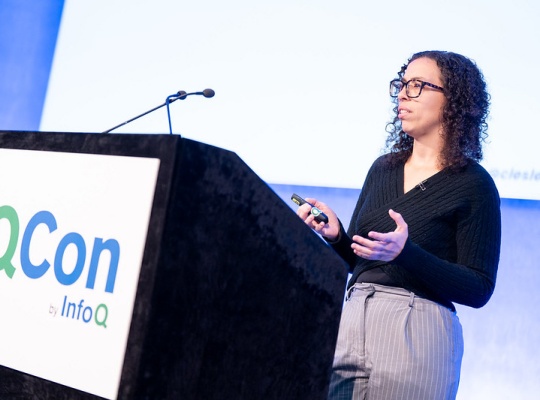Codetown
Codetown ::: a software developer's community
Just started with Ruby on Rails ( Rails 3) and I'm trying to figure out the best I.D.E. Here's what I've found so far:
Eclipse / DLTK - while researching this on the web I came across a number of broken links which was a bad sign and when I did get it installed I wasn't able to debug using it. Ater some more web searches I came across a few posts that said basically the Ruby plug-in had run out of steam and was not being pursued.
JetBrains/RubyMine - this installed and works, so far the *looks* like the best bet. The instant database diagramming looks really cool, do other I.D.E.s support this?
Ecliplse/Aptana - just got this installed, Will try debugging with it soon.
Does anyone have recommendations for their favorite I.D.E.? I don't need anythgin too fancy, as long as I can set a breakpoint and view variables and the call stack I'm happy. And it helps if its a free product.'
Tags:
Replies to This Discussion
-
Permalink Reply by Michael Levin on December 5, 2012 at 10:07am
-
Kevin, What have you found out so far with Eclipse/Aptana and JetBrains/RubyMine? Have you experimented with any other IDE's?
-
-
Permalink Reply by Kevin Neelands on December 5, 2012 at 4:28pm
-
With Eclipse/Aptana I *think* I got installed, but the online references that showed how to start a debugging session accessed menu options that were not present so I was unable to use it. So far RubyMine looks the best, it also checks the syntax of of .html.erb ( Embedded RuBy ) files and generates a diagram of your DB tables, highlighting any relationships that look hinky. Worth noting RubyMine costs money, while the others I've looked at are open source and frankly I think the developers for the free plugins ran out of steam. The profit motive at work.
-
Notes
Welcome to Codetown!
 Codetown is a social network. It's got blogs, forums, groups, personal pages and more! You might think of Codetown as a funky camper van with lots of compartments for your stuff and a great multimedia system, too! Best of all, Codetown has room for all of your friends.
Codetown is a social network. It's got blogs, forums, groups, personal pages and more! You might think of Codetown as a funky camper van with lots of compartments for your stuff and a great multimedia system, too! Best of all, Codetown has room for all of your friends.
Created by Michael Levin Dec 18, 2008 at 6:56pm. Last updated by Michael Levin May 4, 2018.
Looking for Jobs or Staff?
Check out the Codetown Jobs group.
InfoQ Reading List
Target Improves Add to Cart Interactions by 11 Percent with Generative AI Recommendations

Target has deployed GRAM, a GenAI-powered accessory recommendation system for the Home category, using large language models to prioritize product attributes and capture aesthetic cohesion. The system helps shoppers find compatible accessories, integrates human-in-the-loop curation, and achieved measurable improvements in engagement and conversion.
By Leela KumiliPresentation: DevOps Is for Product Engineers, Too

Lesley Cordero discusses platform engineering as a sociotechnical solution for scaling organizations. She explains the CALMS framework, the "pendulum of tension" between reliability and velocity, and how to transition from reactive to proactive leadership. By focusing on communal learning and distributed power, she shares how to build resilient systems without sacrificing human well-being.
By Lesley CorderoToad: A Unified CLI Tool for All Your LLMs That Promises Improved UX From Existing Ones

During his sabbatical, Will McGugan, maker of Rich and Textual( frameworks for making Textual User Interfaces (TUI)), put his UI skills to work to build Toad. The newly publicly released tool aims to provide a unified, “beautiful” GUI for multiple coding agents in your terminal, accessible via the same tool via the Agent Communication Protocol (ACP).
By Olimpiu PopPodcast: The Latest in OpenJDK and JCP Expert Group: Insights with Simon Ritter

In this episode, Simon Ritter, Deputy CTO at Azul, sat down with podcast host Michael Redlich, Lead Editor of the Java topic at InfoQ, and discussed the latest features in OpenJDK and Simon’s experiences serving on the JCP Expert Group since JDK 9. OpenJDK topics included: the six-month release cycle, Generational Shenandoah, JDK Flight Recorder, Project Leyden and Compact Object Headers.
By Simon RitterNeptune Combines AI‑Assisted Infrastructure as Code and Cloud Deployments

Now available in beta, Neptune is a conversational AI agent designed to act like an AI platform engineer, handling the provisioning, wiring, and configuration of the cloud services needed to run a containerized app. Neptune is both language and cloud-agnostic, with support for AWS, GCP, and Azure.
By Sergio De Simone
© 2025 Created by Michael Levin.
Powered by
![]()